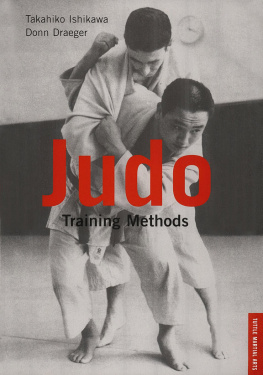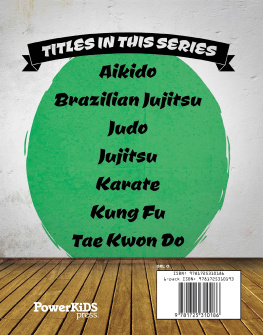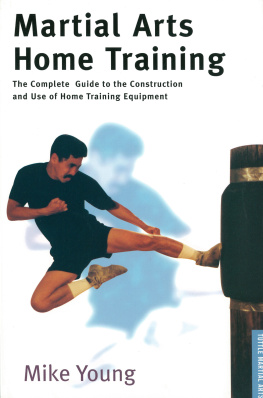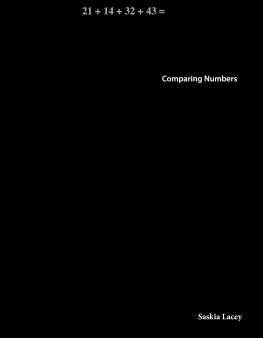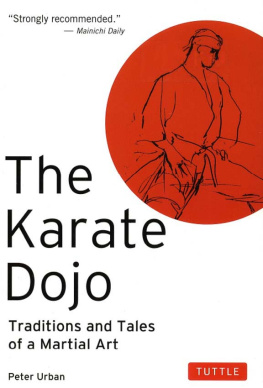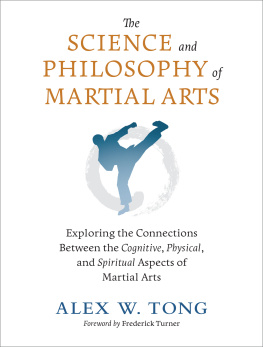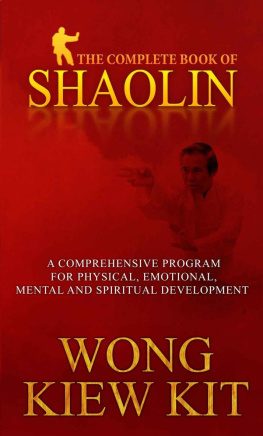Backcover


Cover


Copyright
Special thanks to
Andrew and Ryan Tom
for posing for the drawings,
to Gary Tom, David Taran, and
Don Hopkins, and to Martha Dahlen
for help in writing the text.

I MPORTANT N OTE TO R EADERS:
Training in the martial arts involves physical exertion, movements and actions that can cause injury to you or others. Because the physical activities in this book may be too strenuous for some readers, you should check with a physician before you start your training. If you are ever in doubt about how to proceed or about whether a practice is safe for you, consult a martial arts professional before proceeding.
First published in 2005 by Tuttle Publishing, an imprint of Periplus Editions (HK) Ltd., with editorial offices at 364 Innovation Drive, North Clarendon, VT 05759 U.S.A.
Copyright 2005 Periplus Editions (HK) Ltd.
All rights reserved. No part of this publication may be reproduced or utilized in any form or by any means, electronic or mechanical, including photocopying, recording, or by any information storage and retrieval system, without prior written permission from the publisher.
Library of Congress Cataloging-in-Publication Data
Eng, Paul.
Kungfu for kids / Paul Eng.1st. ed.
p. cm.
ISBN: 9781462910649 (ebook)
1. Kungfu-Juvenile literature. I. Title.
GV1114.7.E534 2004
796.815'9dc22 2004007244
D ISTRIBUTED BY
North America, Latin America, and Europe
Tuttle Publishing
Distribution Center
Airport Business Park
364 Innovation Drive
North Clarendon, VT 057599436
Tel: (802) 7738930
Fax: (802) 7736993
email:
www. tuttlepublishing. com
Japan
Tuttle Publishing
Yaekari Building, 3rd Floor
5412 saki
Shinagawa-ku
Tokyo 141 0032
Tel: (03) 54370171
Fax: (03) 54370755
email:
Asia Pacific
Berkeley Books Pte. Ltd.
61 Tai Seng Avenue, #02-12
Singapore 534167
Tel: (65) 62801330
Fax: (65) 62806290
email:
www.periplus.com
First edition
10 09 08 07 06 05 10 9 8 7 6 5 4 3 2 1
Printed in Malaysia
Illustrations by Stephanie Tok
Design by Kathryn Sky-Peck
WHAT IS KUNGFU?

o you want to learn kungfu? Do you know what kungfu really is? Kungfu is a Chinese martial art. The word martial means it has to do with fighting or combat. The word art means that it is part technique (what can be learned) and part personal expression (what is unique to the person doing it). So, kungfu is both an effective fighting method and a beautiful way of moving.
Finally, kungfu is Chinese, which means it is part of Chinese culture. In fact, kungfu is one of the oldest parts of Chinese culture. It began as military exercises for soldiers, then it became exercises for Buddhist monks. Eventually, it developed into many fighting styles. Have you heard of Shaolin? The history of kungfu explains why Shaolin styles are so famous and why many styles are named after animals.

HISTORY OF KUNGFU

The history of kungfu had four main periods. Let's take a look at each.
The Age of Military Arts (1600 B.C.-A.D. 500)
In the earliest days, exercises were developed mainly to prepare soldiers for battle. Some of these exercises were performed like dances to music.
The Age of Shaolin (5001644)
In A.D. 495, a Buddhist temple was built on a mountain in eastern China and named Shaolin (the name means "Little Forest"). Soon, a monk named Bodhidharma came from India to teach a new practice (what was to become Zen Buddhism). But Bodhidharma found that his students were too weak to meditate long hours, and they fell asleep! He feared that they would never achieve anything this way, so he created exercises to strengthen them. The exercises worked!
After Bodhidharma died, the Shaolin temple monks continued to practice the exercises. Sometimes, bandits attacked their temple. When the monks defeated these bandits, they became famous for their fighting skills. Soon people outside the temple began to learn the exercises too. To improve the techniques, masters watched wild animals and insects fighting. Then they used the animals' strategies and techniques to improve and expand Bodhidharma's system.
The Age of Dispersion (16441910)
In 1644, Manchurians invaded China and overthrew the Ming Dynasty. The Manchurians feared that the Shaolin monks would help Ming supporters start a rebellion, so they burned the Shaolin temple and tried to stamp out its kungfu. Only a few monks survived. Most of them fled to southern China, especially Canton province, and to parts of Southeast Asia, such as Vietnam and Thailand. There they established schools, but each school was a little different. From these schools, students left to set up even more schools. There was no way to keep the styles and techniques the same, so gradually many styles of kungfu developed. The styles are like the branches of a tree: they have a common root (the Shaolin system) but are otherwise independent and often very different.
The Modern Age of Kungfu and Wushu
After the invention of guns, kungfu was mainly practiced as a sport. At the turn of the twentieth century (1900), there was much debate: should China adopt Western exercises and competitive sports or keep its martial arts? Eventually the Chinese decided to keep both, with two branches of the martial artsone for competition and one for tradition. The traditional form is called kungfu, a Cantonese term. It emphasizes self-defense and fighting applications; it is what you see in movies. The other branch, the modern form, is called wushu. Wushu is mainly for competition and demonstrations, so it has more acrobatic movements; it is what you see in the Olympics and public performances. The International Committee of Wushu, with its headquarters in Beijing, the capital of China, creates the forms for wushu practice.





